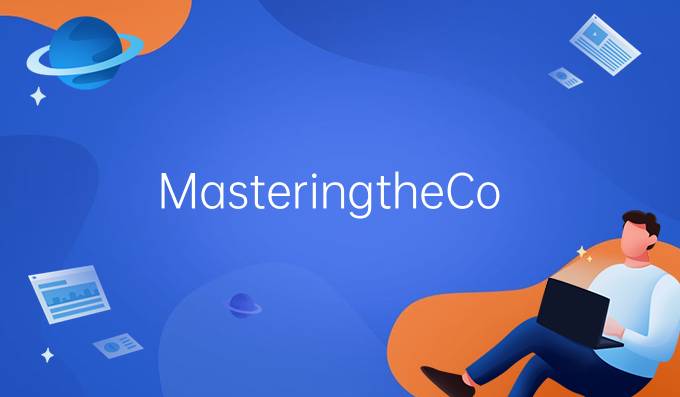
4007-702-802
Follow us on:



本文来源:ManLang 发布时间:2024-10-29 分享:

Abstra: In today's digital landscape, content marketing has emerged as a fundamental strategy for businesses seeking to engage their audience and drive results. Mastering the content marketing process involves a systematic approach that enhances the effeiveness of communication with potential customers. This article explores the content marketing process in detail, encompassing strategy development, audience engagement, content creation, and measurement of results. Each seion provides indepth insights into the steps necessary for creating a robust content marketing strategy. By understanding these four critical aspes, businesses can tailor their content to meet the needs and preferences of their target audience, ultimately leading to increased engagement, brand loyalty, and conversion rates.
Creating a solid content marketing strategy is the foundation of successful content marketing. This strategy should align closely with the overall goals of the business. To begin, it's essential to condu a thorough audit of existing content to identify what works and what doesn't. This analysis enables marketers to leverage successful strategies while discarding those that fail to resonate with audiences.

Next, defining the target audience is crucial. This involves creating detailed buyer personas that encapsulate the demographics, interests, pain points, and preferences of potential customers. Understanding the audience helps marketers tailor content to address specific needs and concerns, increasing the chances of engagement.
Another key element of strategy development is establishing clear goals and objeives. These should be measurable and aligned with the business's broader marketing objeives, whether that be increasing brand awareness, generating leads, or boosting conversions. By setting SMART goals (Specific, Measurable, Achievable, Relevant, Timebound), marketers can track progress and adjust taics as necessary to achieve desired outcomes.
Engagement is the heart of content marketing. Once a strategy is in place, the next step is to conne meaningfully with the audience. This begins with understanding the preferred channels and platforms where the target audience consumes content. By distributing content through the right channels, such as social media, email newsletters, or blogs, marketers can increase visibility and interaion.
Creating valuable, relevant, and timely content is essential for capturing attention. This content should address the audience's needs and provide solutions or insights. Utilizing different formats, such as articles, infographics, videos, and podcasts, can also help cater to varied preferences and enhance engagement.
Moreover, fostering interaion is vital. Marketers should encourage comments, shares, and conversations through calls to aion. Hosting webinars, Q&A sessions, or interaive polls can also deepen audience conneion. The key is to create a twoway dialogue that nurtures relationships and builds community around the brand.
With a strategy established and audience engagement underway, the next step is content creation and distribution. Quality content creation is pivotal; this requires not only creativity but also thorough research and planning. Writers should prioritize storytelling that resonates with the target audience while incorporating SEO praices to enhance visibility on search engines.
The creation process can be streamlined by developing a content calendar. This tool helps in planning and organizing content themes, publication dates, and distribution channels. A wellstruured calendar ensures consistency, which is key to building an audience and maintaining engagement over time.
Once content is created, effeive distribution strategies come into play. Beyond simply posting on social media or websites, marketers should consider targeted email marketing campaigns, collaborations with influencers, and crosspromotion with partners to maximize reach. Understanding the timing of distribution, optimal posting schedules, and even paid promotion options can further enhance visibility and effeiveness.
The final piece of mastering content marketing involves measuring results. Without analytics, it's challenging to determine what content is working and what needs improvement. Establishing KPIs (Key Performance Indicators) based on the initial objeives will guide the measurement process. Metrics could include website traffic, engagement rates (likes, shares, comments), lead generation, and conversion rates.
Utilizing tools such as Google Analytics, social media insights, and email marketing metrics provides valuable data about audience behavior and content performance. Analyzing this data allows marketers to understand which content pieces resonate well and which methods need refinement.
Optimization is an ongoing process. Based on the insights gained from measurement, marketers should adjust their strategies, refine their content, and experiment with new approaches. Continuous improvement based on audience feedback and performance data will foster a more flexible and responsive content marketing strategy, positioning the brand to adapt to changing market dynamics effeively.
Summary: In conclusion, mastering the content marketing process requires a comprehensive understanding of strategy development, audience engagement, content creation, and result measurement. By systematically approaching these elements, businesses can create compelling content that resonates with their audience and drives meaningful results. As the digital landscape continues to evolve, staying informed and adaptable in these four aspes will be crucial for successful content marketing initiatives.
猜您感兴趣的内容
Unlocking Success: Inspiring Case Studies in Content Marketing Strategies
2024-09-12Content Marketing Common Patterns and Types - A New Approach
2024-04-20Mastering SEO Keyword Ranking Optimization: Effeive Strategies for Improved Search Visibility
2025-01-15Mastering Website Development: A Comprehensive Guide to Building and Launching Your Online Presence
2025-01-25Unlocking Brand Success: Mastering口碑营销运营 for Effeive WordofMouth Marketing Strategies
2025-02-12Outsourcing Website Optimization: Empowering Your Online Presence
2024-04-14Transforming Your Business Online: Expert Solutions for Corporate Website Development
2024-11-29您也许还感兴趣的内容
Exploring Effeive Content Marketing Channels: Strategies for Success in Digital Engagement
2024-12-19Exploring the Synergy of Content Marketing and Other Marketing Strategies for Enhanced Brand Engagem
2025-02-28Understanding SEO and SEM: Key Differences, Strategies, and Best Praices for Digital Marketing Succe
2024-10-22Boost Your Online Visibility with Top-Ranked Keywords: Leading Reputation Management Firm
2024-02-05Unlocking the Power of Social Media: Innovative Strategies for Travel Marketing Success
2025-01-03Mastering Content Promotion: Strategies to Amplify Your Brands Voice and Engage Target Audiences
2025-01-22